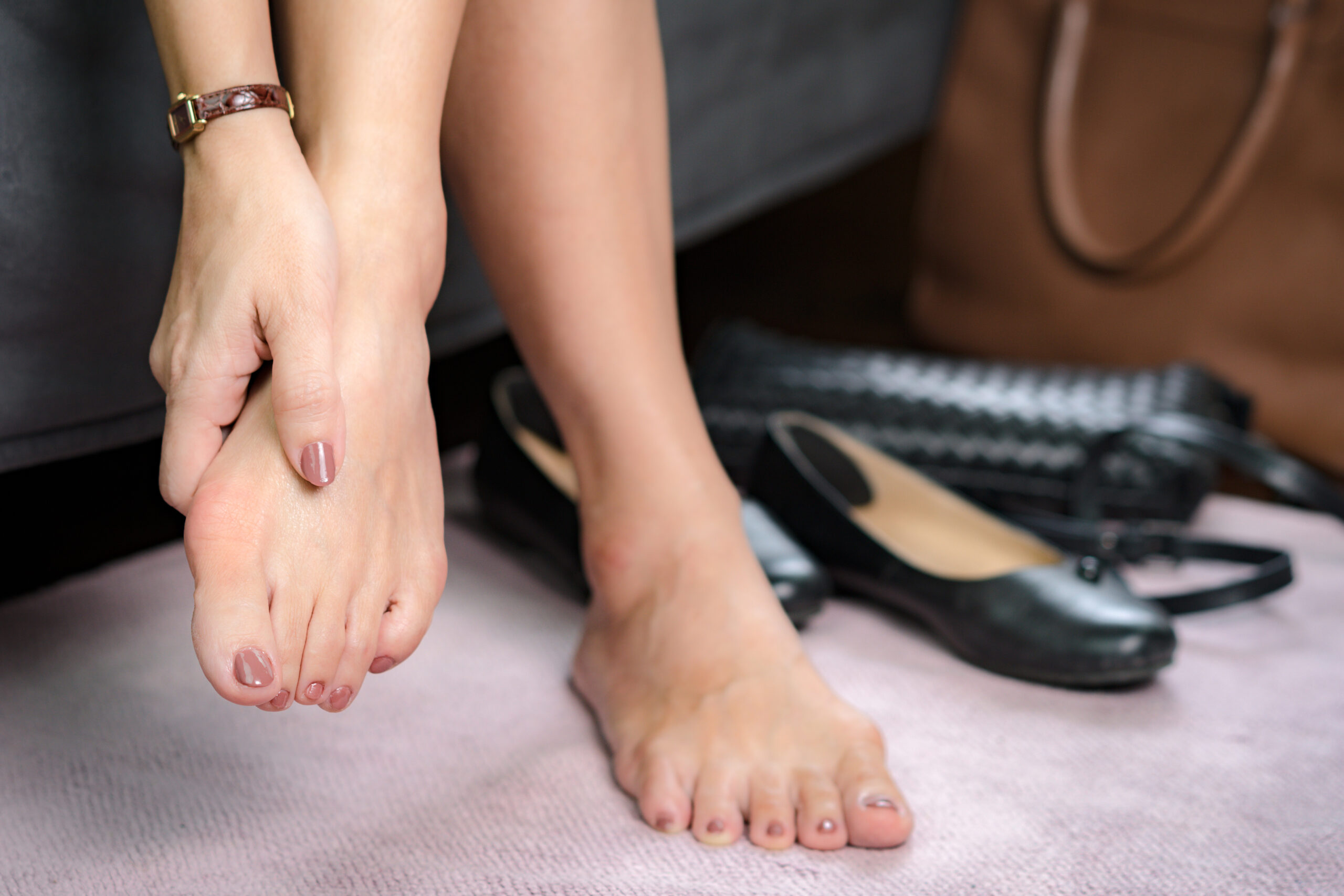Bunions, Calluses, & Corns
Applies to: Foot/Ankle

Everyday events expose the feet and toes to excessive pressure and friction. Unfortunately, the impact of repeated rubbing motions can lead to irritating, unsightly, and painful foot conditions. Reducing the recurring pressure on key areas of the feet and toes is an essential first step to alleviating the discomfort of foot problems, including:
Bunions – According to the American Academy of Orthopaedic Surgeons, women are nine times more likely to have bunions than men due to ill-fitting shoes that are too narrow, tight, and high heels. Unlike corns and calluses, bunions involve the malformation of a bone, most often the big toe joint. With bunions, treatment is necessary to prevent progressive damage.
Calluses – A callus is an area of hard, thickened skin that can occur across the ball of the foot, on the heel, or the outer side of the big toe as protection against friction or pressure. A plantar callus can form when one metatarsal bone is longer or lower than the others. If deformities like calluses are left untreated, more serious problems such as blisters, skin ulcerations, and infection can occur.
Corns – The main difference between a corn and a callus is where the buildup of hard skin forms on the foot. Corns develop on the tops or sides of the toes because the bones push up against the shoe and put pressure on the skin. Soft corns may resemble open sores and develop between the toes as they rub against each other.
Foot and toe deformities can have painful nerves or bursa sacs (fluid-filled pockets that act as shock absorbers) beneath them that cause no symptoms, sharp shooting pain, or dull aching soreness. A conservative approach of gently removing excess skin, padding affected areas, wearing comfortable shoes, or using orthotic inserts is highly recommended to prevent further complications.
NOTE: People with diabetes must take special care that bunions, calluses, or corns don’t produce sores that won’t heal properly. Routine visits to the podiatrist and a diabetic foot care program are highly recommended.
